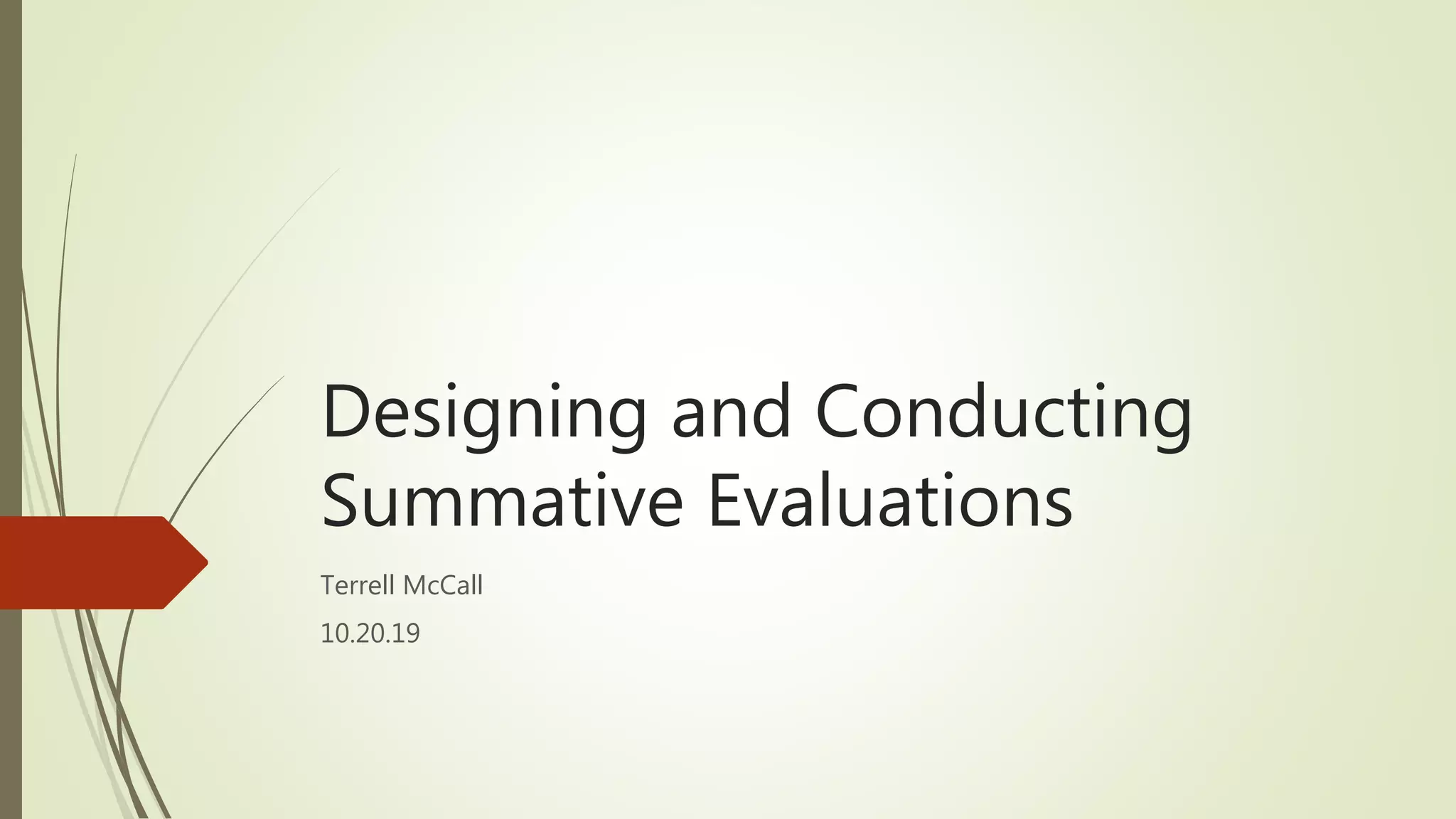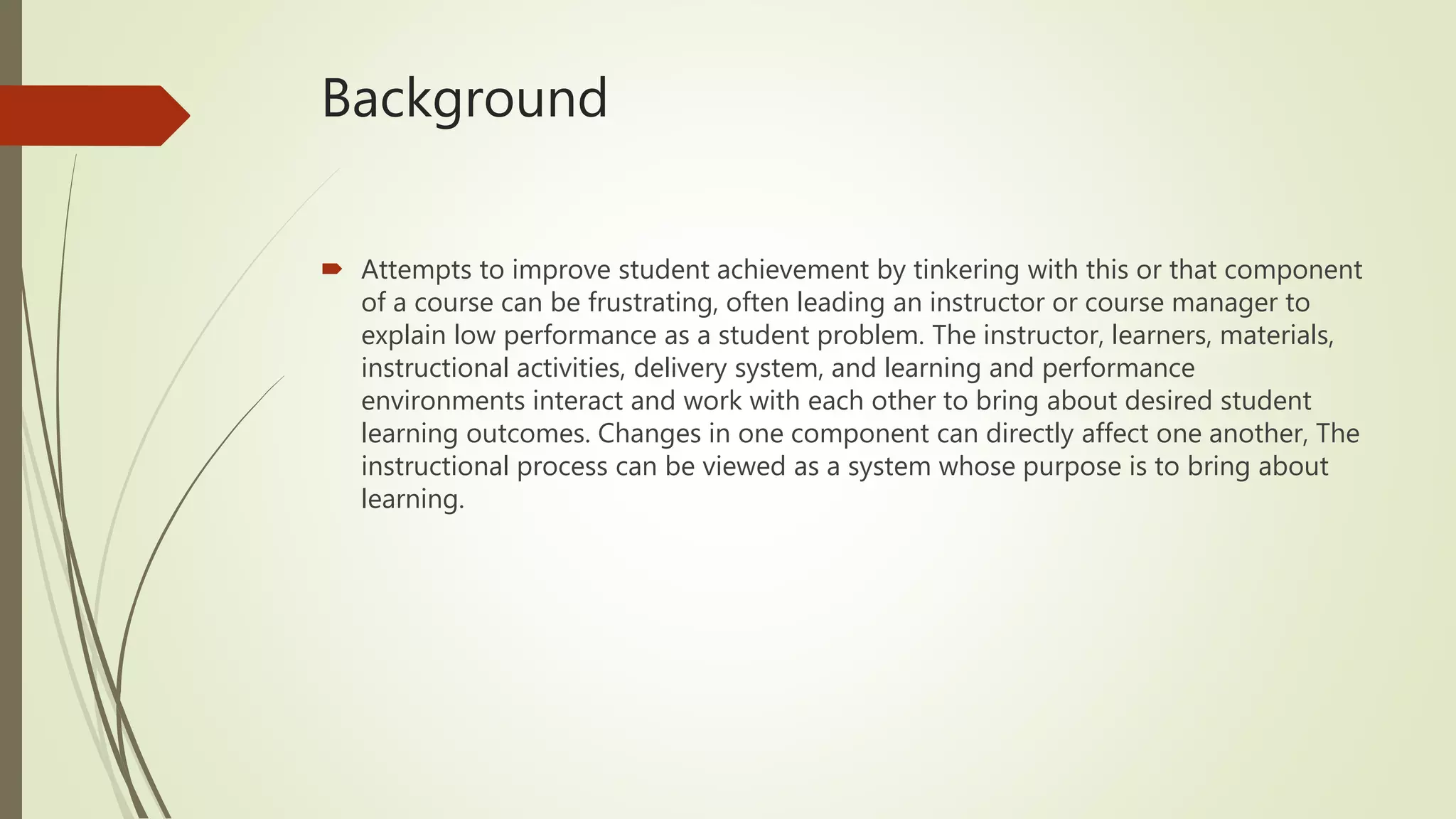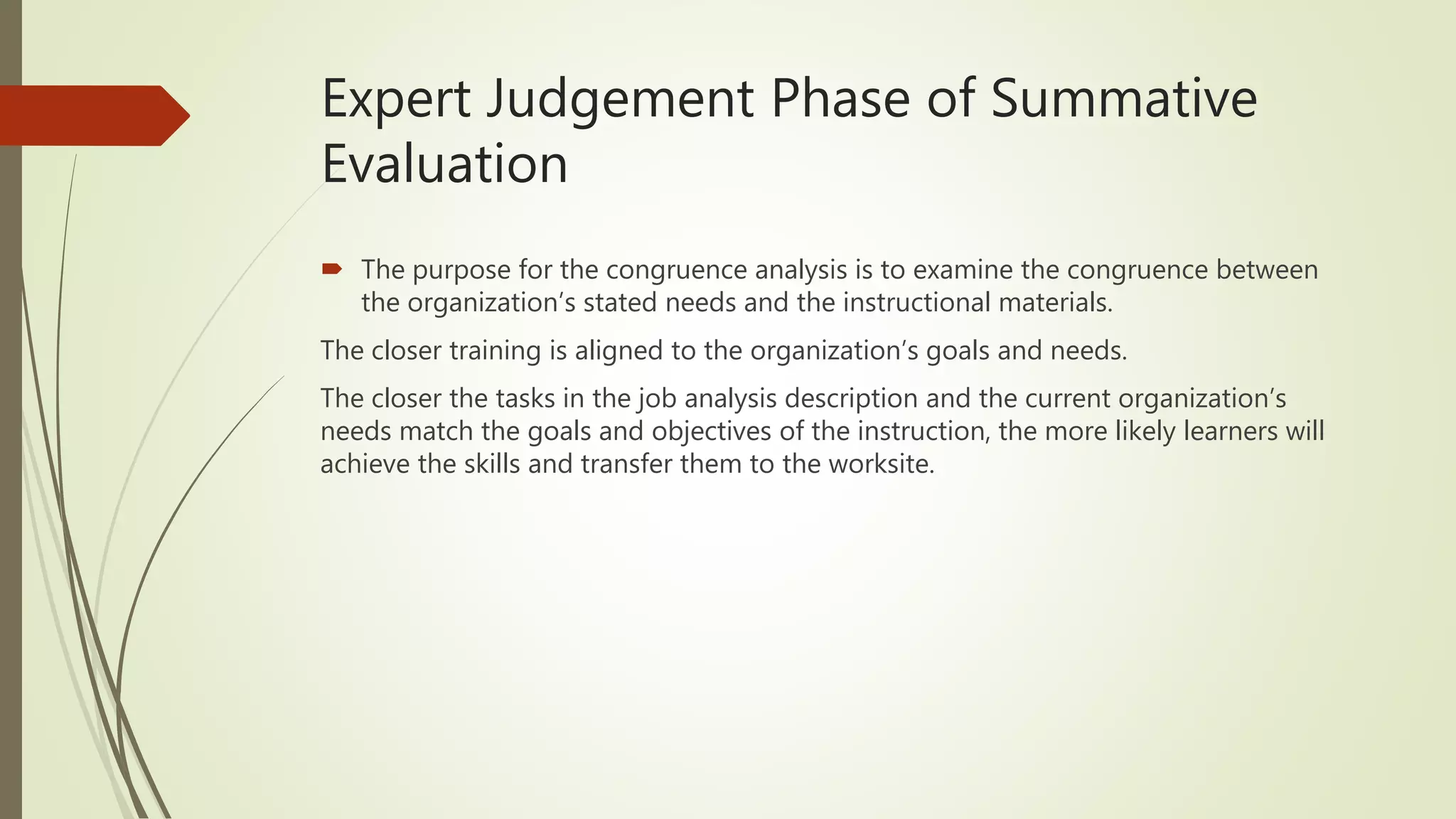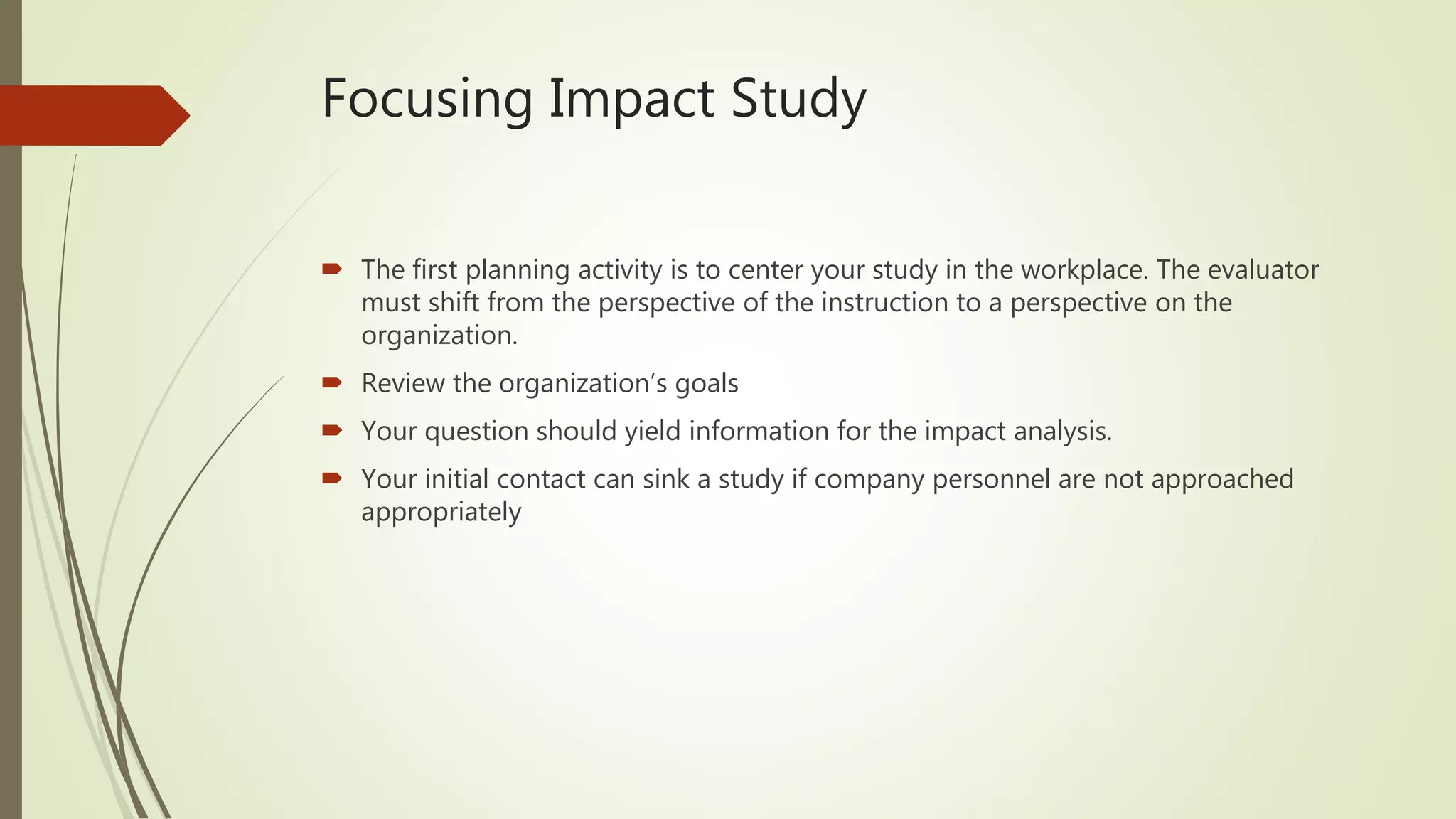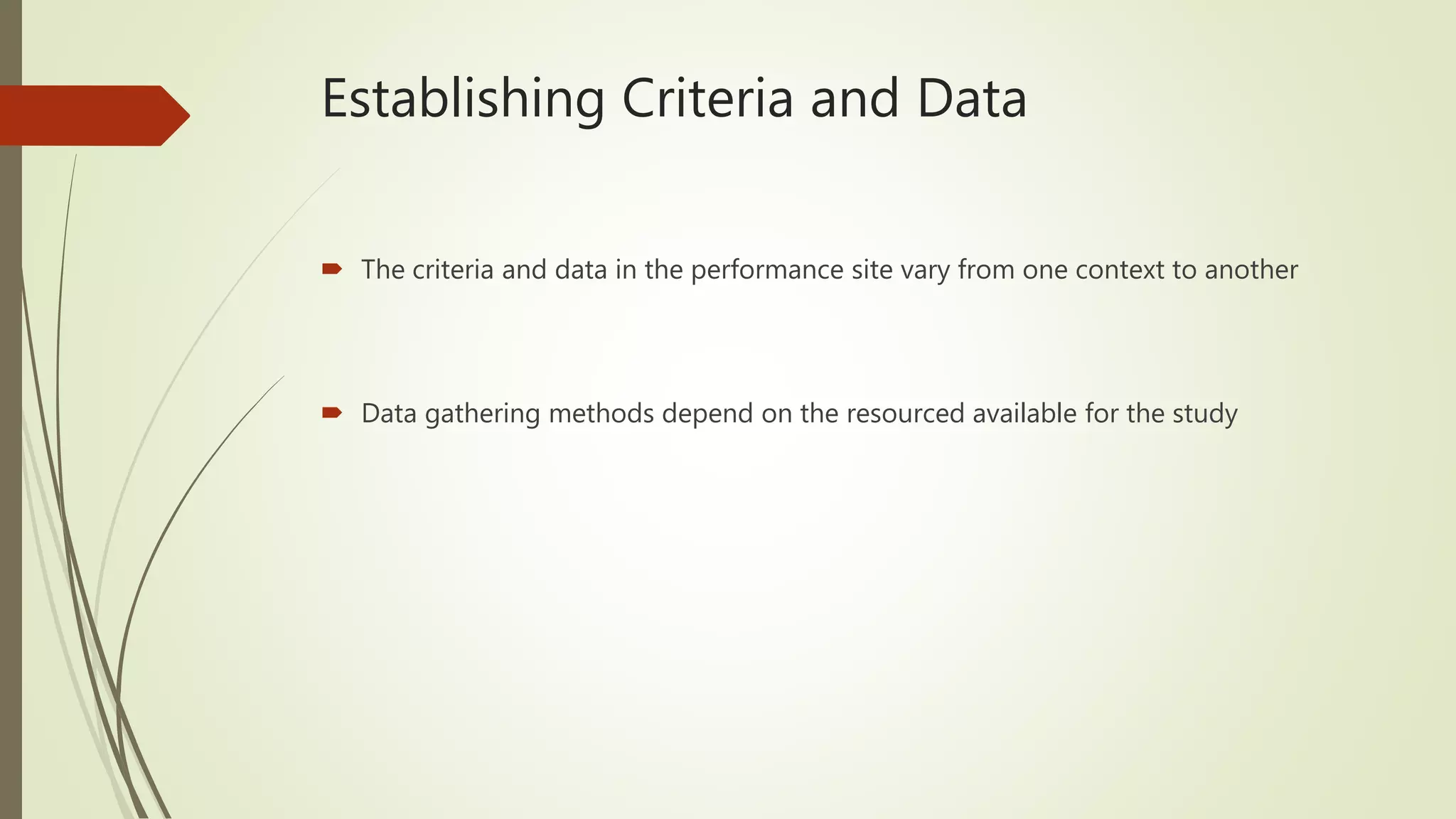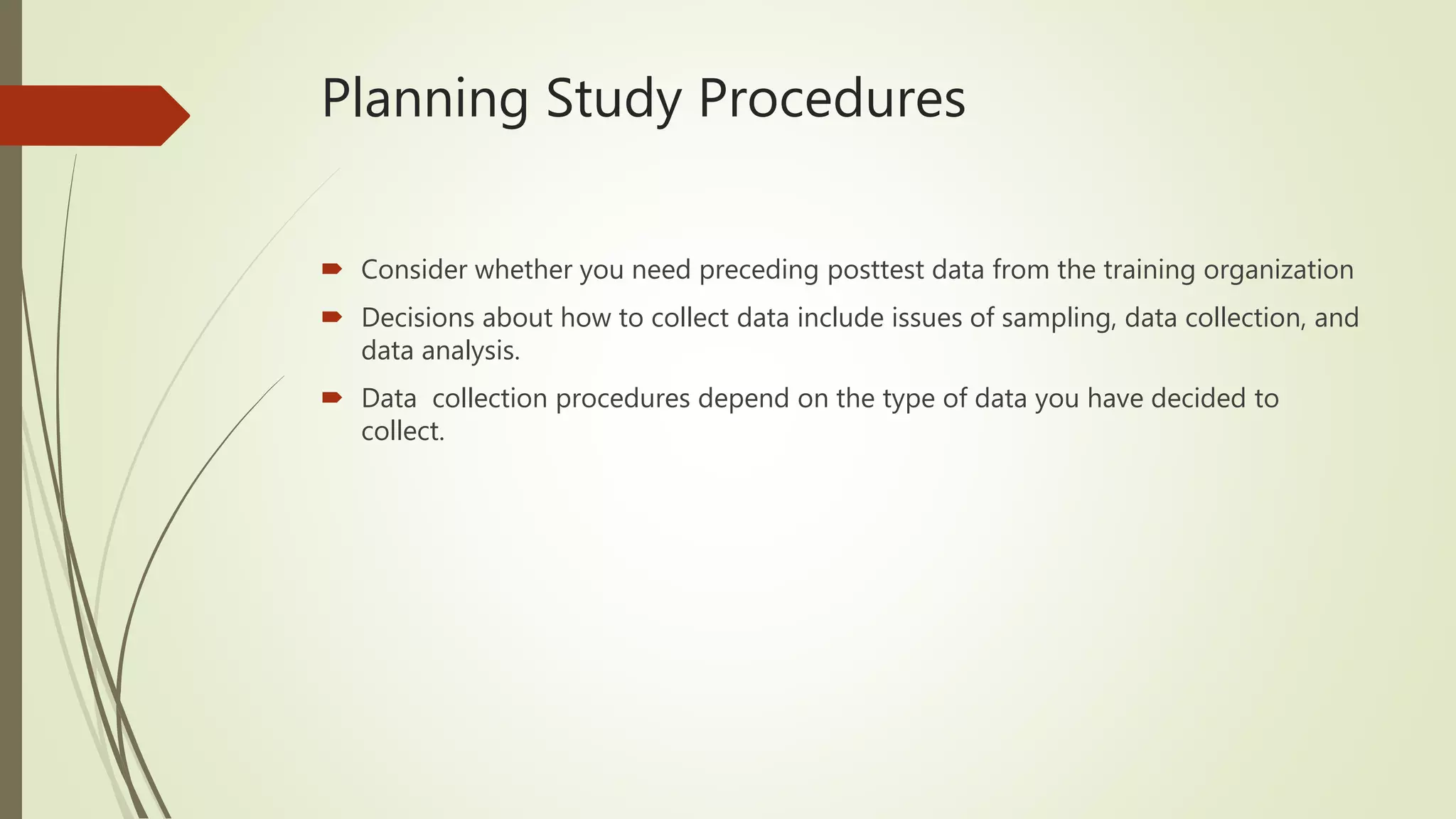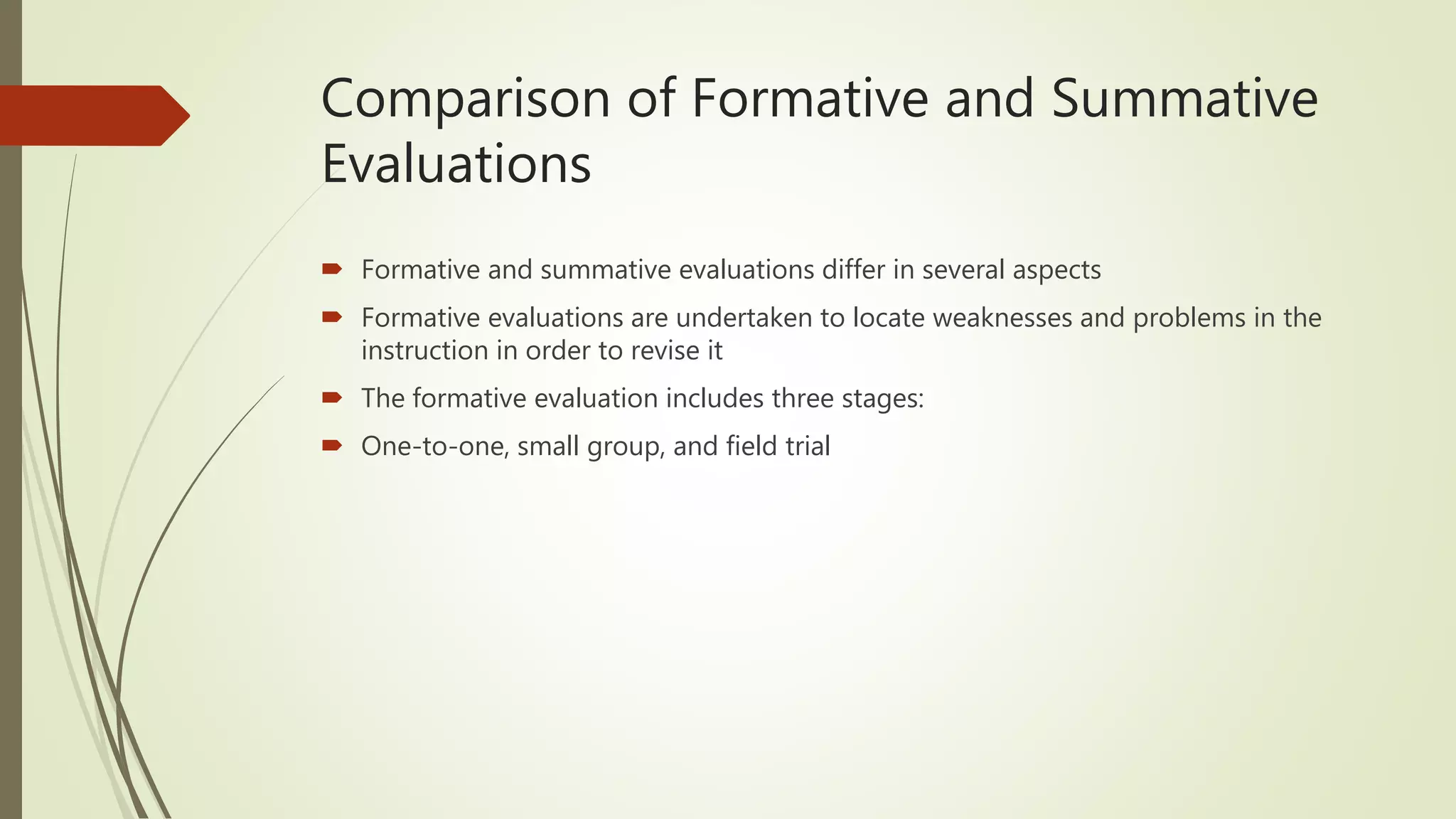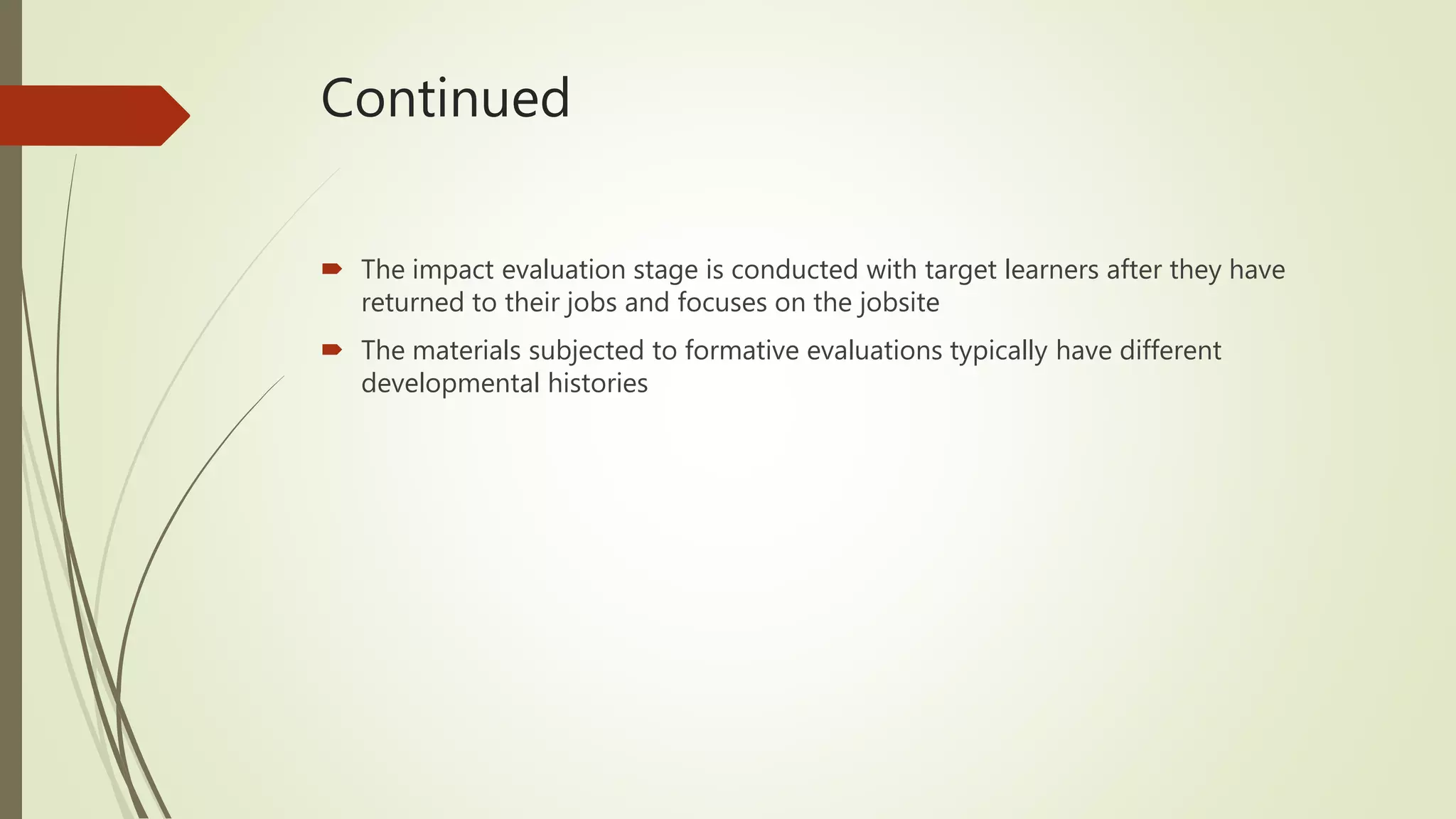The document discusses the purpose and process of conducting summative evaluations, which aim to determine whether instruction should be maintained, adopted, or adapted based on expert reviews and its impact. It contrasts summative evaluations with formative evaluations and describes the expert judgement and impact phases of summative evaluation, including conducting a congruence analysis, content analysis, and impact study within an organization.
